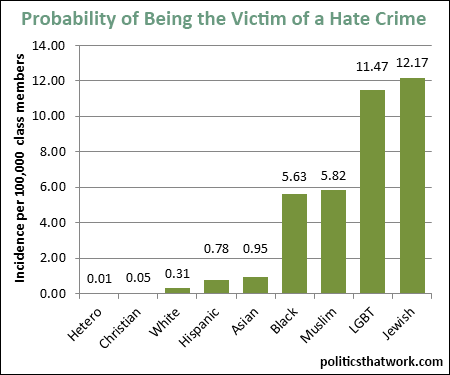
Description: This graph shows the number of incidents of hate crimes per 100,000 members of the group that was targeted in 2013. In short, it shows the odds that a member of that group will be the victim of a hate crime based on the group they are a member of each year. Note that a person could fall in more then one of these groups, in which case their odds would be based on the total of the relevant columns.
Sources: FBI Census Pew Gallup
Data: Excel
Last updated: November 4, 2015





